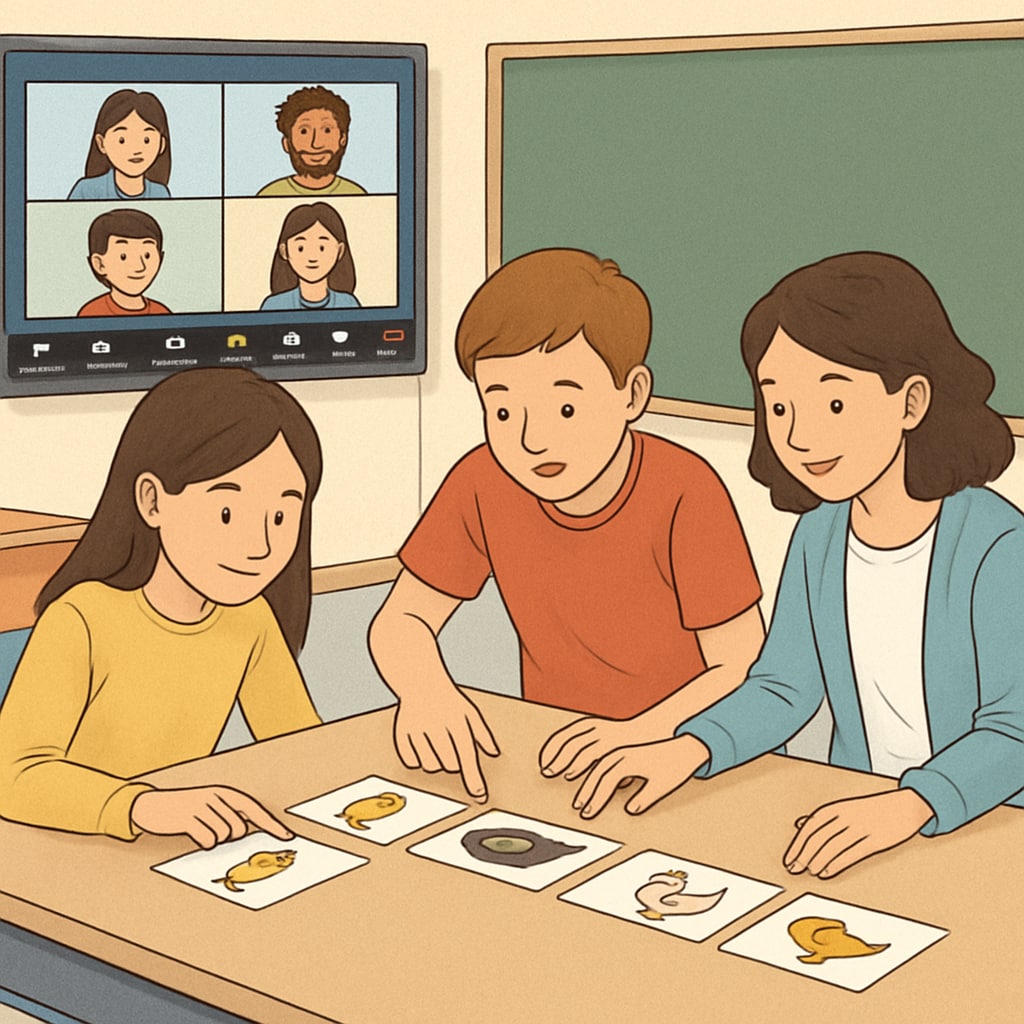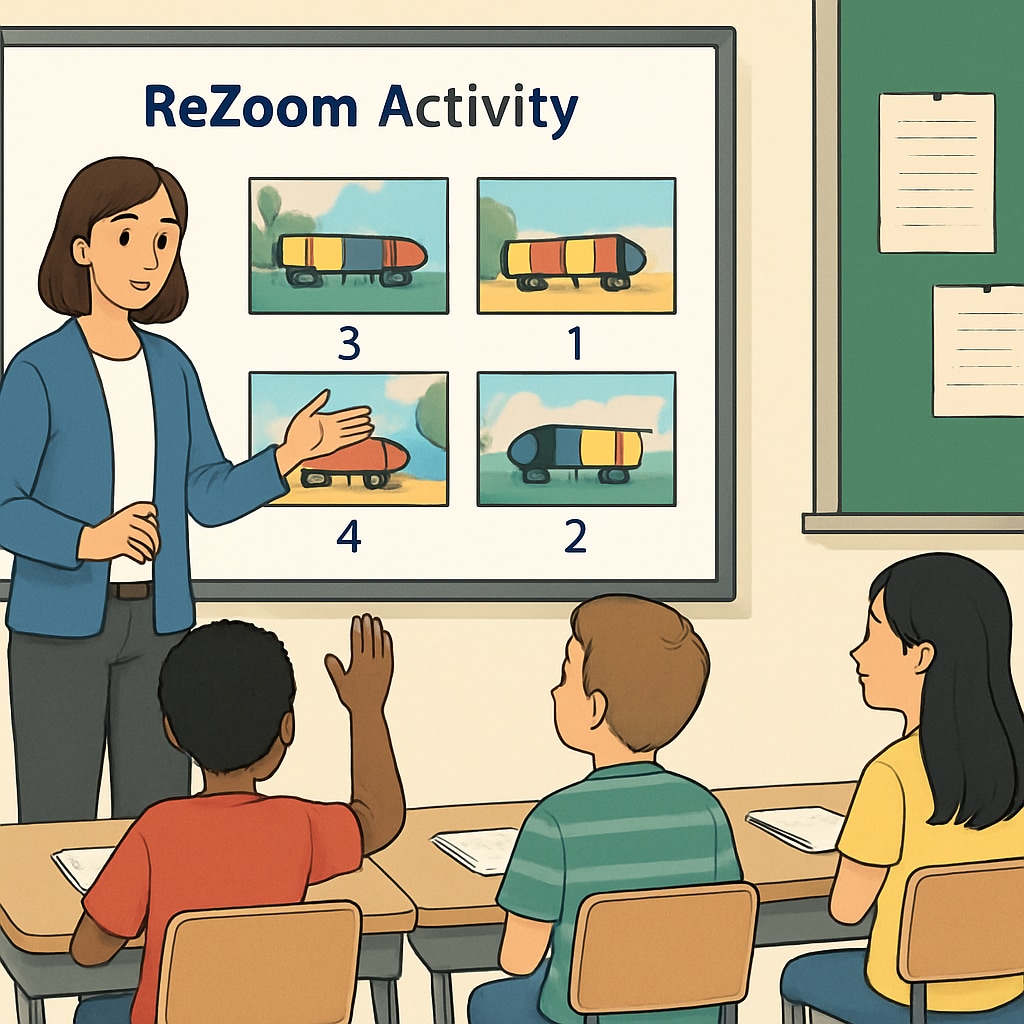Zoom and ReZoom activities have become increasingly popular in K-12 education for their ability to foster teamwork, critical thinking, and engagement. However, a common challenge arises when the answer sequence—critical to the activity’s success—gets disorganized or lost. This article delves into the methods for restoring the answer sequence and optimizing these activities for a seamless and engaging classroom experience.
Understanding Zoom and ReZoom Activities
Zoom and ReZoom are sequenced storytelling activities designed to encourage collaboration and enhance communication skills. In Zoom, students must piece together a series of images in a specific order to reveal a narrative. ReZoom, a more advanced version, involves reversing or reconstructing the sequence to uncover deeper insights. Both activities rely heavily on the correct order of answers to maintain their educational value.
However, when the sequence becomes disorganized—due to misplaced materials, lack of clarity, or student error—the activity can lose its intended impact. This issue emphasizes the importance of strategies to restore order and ensure that the learning objectives remain intact.

Challenges of Lost Answer Sequences in Zoom and ReZoom
Restoring lost answer sequences can be daunting for teachers, particularly in large or dynamic classroom settings. Some of the common challenges include:
- Time Constraints: Spending valuable class time reallocating or reordering cards can detract from the activity’s overall purpose.
- Student Frustration: Disruption in the flow of the activity may lead to disengagement or confusion among students.
- Lack of Preparation: Teachers may not always have backup plans or additional resources to quickly address sequence-related issues.
To mitigate these challenges, educators can adopt a structured approach to both activity preparation and troubleshooting in real-time.
Strategies for Restoring and Optimizing Answer Sequences
To overcome the challenges associated with lost answer sequences in Zoom and ReZoom activities, teachers can implement the following strategies:
- Pre-Activity Preparation: Label each card or image with a subtle identifier (e.g., numbers or letters) on the back to facilitate quick reordering if needed.
- Digital Backups: Maintain a digital version of the sequence as a reference. Tools like PowerPoint or Google Slides can be used to display the correct order if confusion arises.
- Student Roles: Assign specific roles to students, such as “sequence checker” or “timekeeper,” to promote accountability and streamline the flow of the activity.
- Real-Time Adjustments: If the sequence is lost mid-activity, pause to engage the class in a collaborative problem-solving discussion, encouraging students to deduce the correct order.
- Post-Activity Review: Dedicate time to reflect on the activity, discussing what went well and how the sequence was maintained or restored.
By integrating these strategies, educators can not only address the issue of lost sequences but also create opportunities for deeper learning and interaction.

Enhancing Engagement Through Structured Teaching Design
Beyond restoring answer sequences, educators can enhance the overall effectiveness of Zoom and ReZoom activities by focusing on teaching design:
- Incorporate Technology: Use interactive tools like smart boards or tablets to display sequences and engage students visually.
- Encourage Peer Feedback: Allow students to evaluate each other’s contributions, fostering a sense of responsibility and collaboration.
- Gamify the Activity: Introduce elements of competition, such as timed challenges, to make the activity more engaging.
These enhancements not only keep students motivated but also ensure that the activity fulfills its educational purpose effectively.
Conclusion: Creating Seamless and Engaging Learning Experiences
Zoom and ReZoom activities offer unique opportunities for interactive learning in K-12 classrooms. By addressing the challenges of lost answer sequences with effective strategies and enhancing the teaching design, educators can maximize the impact of these activities. As a result, students gain valuable skills in teamwork, critical thinking, and communication while enjoying an engaging and dynamic learning environment.
With the right preparation and execution, Zoom and ReZoom activities can become indispensable tools for modern educators, ensuring that every classroom session is both productive and memorable.


